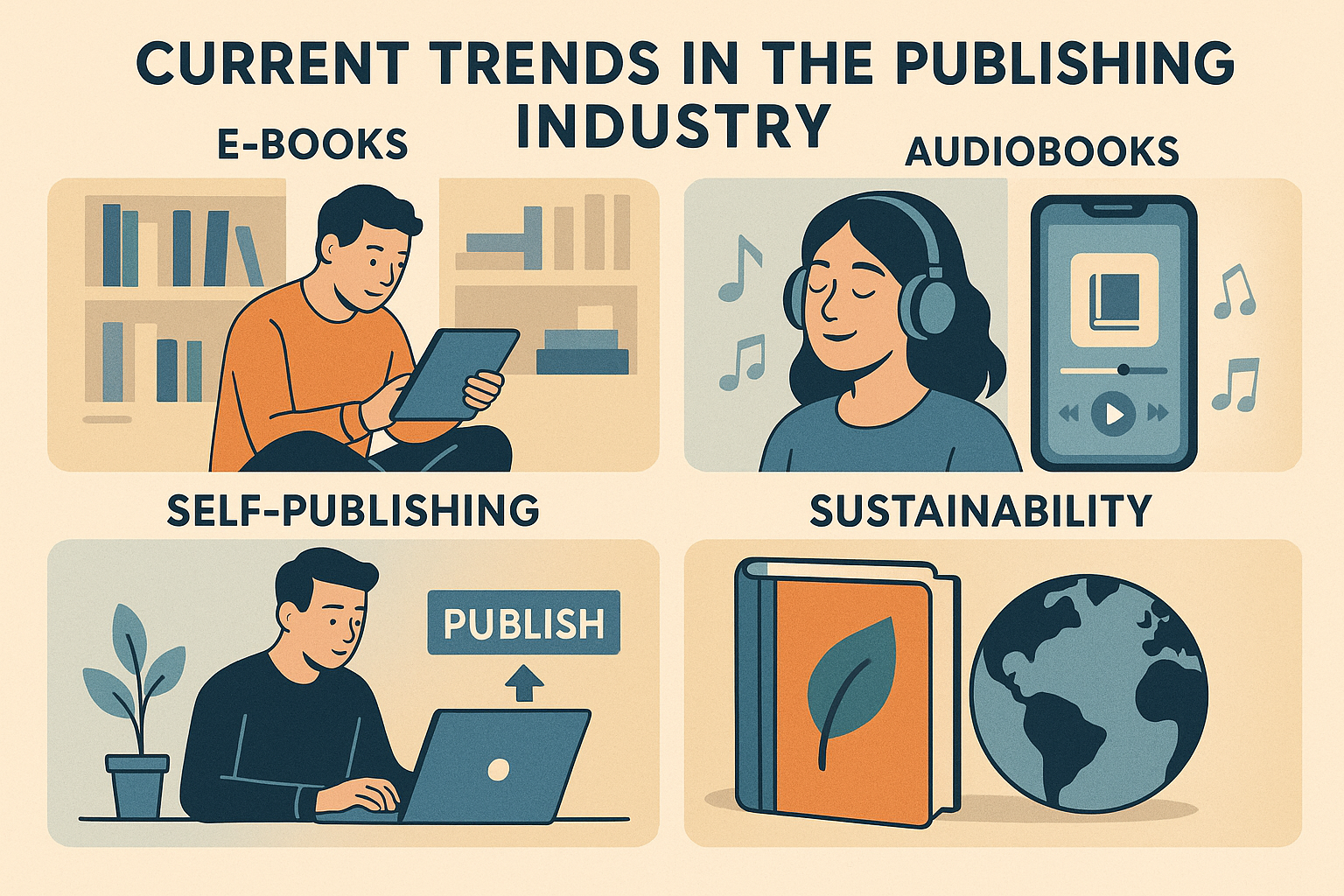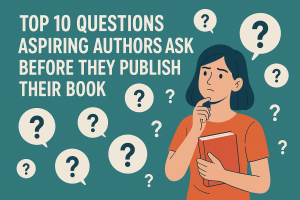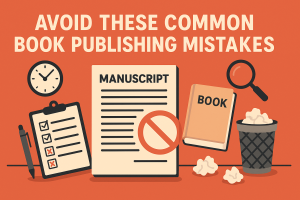The publishing landscape has undergone a remarkable transformation in recent years, driven by technological innovation, shifting consumer behaviors, and global market forces. For authors, publishers, and industry professionals, staying informed about these evolving trends is essential for making strategic decisions in an increasingly competitive market. This comprehensive analysis explores the most significant developments reshaping how books are created, distributed, marketed, and consumed in today’s dynamic publishing ecosystem.
The Rise of Digital-First Publishing Strategies
The traditional publishing model, where print books were the primary focus and digital editions were secondary considerations, has largely been inverted in recent years. Today’s forward-thinking publishers are increasingly adopting digital-first approaches that prioritize flexibility, speed to market, and diverse revenue streams.
The Evolution of E-book Technologies and Platforms
E-books have evolved far beyond simple digital replicas of print titles. Enhanced e-books now incorporate interactive elements, multimedia content, and innovative features that create immersive reading experiences. Major platforms like Amazon’s Kindle, Apple Books, and Kobo continue refining their technologies to improve readability, accessibility, and user engagement.
The underlying technology supporting e-books has also matured. The EPUB 3 standard now allows for more sophisticated formatting, better accessibility features, and improved support for complex layouts and illustrations. Publishers leveraging these capabilities can create digital reading experiences that rival or exceed print in certain contexts.
Subscription services like Kindle Unlimited, Scribd, and Storytel have gained substantial market share, introducing Netflix-style all-you-can-read models that change how readers discover and consume content. These platforms have proven particularly effective for genre fiction, leading many book publishing services to develop specialized strategies for these channels. The subscription model generates valuable data about reading habits that publishers can use to inform future acquisition and marketing decisions.
Mobile Reading and Micro-Content
Smartphones have become a primary reading device for millions of consumers worldwide. This shift has driven innovation in content formatting and delivery, with publishers creating mobile-optimized reading experiences. Short-form content, serialized publishing, and content specifically designed for small screens continue gaining popularity.
Apps like Wattpad, Radish, and Kindle Vella have pioneered serialized digital publishing models where readers consume stories in bite-sized installments, often paying as they go. This approach has proven particularly effective for engaging younger readers who are accustomed to consuming content in short sessions on mobile devices.
The rise of mobile reading has also influenced content creation, with some book publishing services now specializing in developing and optimizing content specifically for mobile consumption. These services help authors format work for optimal mobile reading experiences and develop serialization strategies that maximize reader engagement and revenue.
Direct-to-Digital Publishing
Many publishers are experimenting with digital-only imprints or titles that bypass print entirely. This approach reduces production costs and allows for more experimental content that might not justify the expense of a traditional print run. Digital-first or digital-only strategies enable publishers to test market reception before committing to print production.
The direct-to-digital model has proven particularly valuable for testing new authors, reviving backlist titles, or publishing works with niche appeal. Publishers can gather data on performance and reader engagement before making larger investments in marketing or print production. This approach has been especially beneficial for genre fiction like romance, science fiction, and mystery, where digital readership is particularly strong.
The Renaissance of Audiobooks
Perhaps no segment of publishing has experienced more dramatic growth than audiobooks. Once a niche format primarily serving the visually impaired and commuters, audiobooks have exploded into the mainstream, growing at double-digit rates annually for the past several years.
Technological Advancements in Audio Production
Improvements in recording technology, digital distribution, and mobile listening apps have transformed audiobook production and consumption. Modern audiobooks feature sophisticated production values, including professional narration, sound effects, and musical elements that enhance the storytelling experience.
Text-to-speech technology has improved dramatically, with AI-generated voices becoming increasingly natural and expressive. While premium audiobooks still rely on human narrators, these technological advances have made audiobook production more accessible and affordable for independent authors and small publishers. Some specialized book publishing services now offer high-quality audiobook production at price points that make the format viable even for authors with modest budgets.
Cloud-based recording and production tools allow narrators to work remotely while maintaining studio-quality output. This distributed production model became essential during the COVID-19 pandemic but has persisted as an efficient approach that expands the pool of available voice talent regardless of geographic location.
Multicast Performances and Enhanced Audio Experiences
Leading publishers are pushing the boundaries of the audiobook format with multicast performances featuring full casts of voice actors, original music scores, and sophisticated sound design. These productions blur the line between traditional audiobooks and audio dramas, creating immersive listening experiences that attract new audiences to the medium.
Services like Audible Originals and Spotify have commissioned original audio content designed specifically for the format rather than adapted from print. These audio-first productions take full advantage of the medium’s strengths and have helped establish audiobooks as a distinct art form rather than merely an alternative way to consume print books.
The enhanced production values of modern audiobooks have attracted Hollywood talent, with major actors now regularly narrating high-profile titles. This celebrity involvement has further legitimized the format and attracted listeners who might not otherwise consume books.
Integration with Voice Assistant Technologies
The proliferation of smart speakers and voice assistants has created new opportunities for audiobook consumption. Listeners can now access their audiobook libraries through devices like Amazon Echo, Google Home, and Apple HomePod, making the listening experience more seamless and accessible throughout the home.
Voice-first interfaces are changing how consumers discover and purchase audiobooks. Publishers and book publishing services are optimizing metadata and descriptions to facilitate voice-based search and recommendations. This trend is likely to accelerate as voice assistant technology continues to improve and gain market penetration.
Print’s Resilient Adaptation
Despite predictions of its demise, print publishing has demonstrated remarkable resilience by adapting to changing market conditions and consumer preferences. Physical books remain a significant portion of the market, with print sales showing stability and even growth in certain segments.
The Evolving Role of Print Books
Print books have increasingly become premium physical objects, with publishers investing in design elements that digital cannot replicate. Special editions, enhanced cover treatments, illustrated editions, and high-quality materials serve the collector’s market and emphasize the tangible pleasures of physical books.
Independent bookstores have experienced a resurgence, with their numbers growing steadily over the past decade. These retailers differentiate themselves through curated selections, community engagement, and personalized service that online retailers cannot match. This revival has reinforced the importance of quality physical books in the market.
Print-on-demand technology has revolutionized the economics of physical book production. By eliminating the need for large print runs and warehouse storage, these technologies make printing books economically viable even for niche titles with limited audiences. Book printing companies have embraced these technologies, offering increasingly sophisticated options for short-run and on-demand printing that maintain high production values.
Special Formats and Collector’s Editions
Publishers are capitalizing on readers’ emotional connection to physical books by creating special formats and limited editions. These premium products often include features like signed pages, special bindings, exclusive content, or collectible packaging that command higher price points and create additional revenue streams from existing intellectual property.
The collectible book market has grown substantially, with fine press editions, limited runs, and deluxe packages appealing to dedicated readers and collectors. Publishers like Folio Society, Subterranean Press, and Suntup Editions have built successful businesses focused entirely on high-end book production, demonstrating the continued value of physical books as objects of desire.
Book design has received renewed attention as publishers seek to distinguish print offerings from digital alternatives. Innovative cover designs, thoughtful typography, and attention to physical details like paper quality and binding techniques enhance the tactile experience of reading physical books and justify their premium pricing in a digital age.
Integration of Physical and Digital Experiences
Progressive publishers are exploring ways to bridge physical and digital reading experiences. Technologies like augmented reality, QR codes, and companion apps extend the content of physical books into interactive digital experiences, creating new dimensions for engagement and storytelling.
Some innovative book printing companies now offer technologies that integrate digital elements with physical books. For example, codes printed in children’s books might unlock animated content when scanned with a smartphone, or literary fiction might include links to author interviews, historical context, or supplementary materials that enrich the reading experience.
These hybrid approaches recognize that many readers move fluidly between formats, choosing physical books in some contexts and digital in others. Publishers that embrace this reality can create more comprehensive and satisfying experiences for their audiences.
The Globalization of Publishing
Publishing has become increasingly global, with technological advances eliminating many traditional barriers to international distribution. This globalization presents both opportunities and challenges for publishers and authors.
Expanding Access to International Markets
Digital distribution has dramatically reduced the obstacles to reaching international readers. E-books and audiobooks can be made available globally with minimal additional cost, allowing publishers to access markets that would be impractical to serve with physical books alone.
Translation technologies have improved significantly, making it more feasible to localize content for different markets. While human translation remains essential for high-quality literary work, machine translation can now provide acceptable quality for certain types of content, expanding the potential for global distribution.
International book publishing services have emerged to help authors and publishers navigate foreign markets. These specialized services handle translations, cultural adaptations, local marketing, and distribution arrangements that make global publishing accessible even to independent authors and small presses.
Cross-Cultural Content and Diverse Voices
Readers worldwide are showing increasing interest in stories from diverse cultural perspectives. Works in translation are finding broader audiences, and publishers are actively seeking voices that can provide authentic insights into different cultural experiences.
Publishers like AmazonCrossing, Europa Editions, and New Directions have built successful businesses focusing on works in translation, bringing international authors to English-speaking markets. Simultaneously, English-language works are being translated into more languages than ever before, creating truly global readerships for compelling content.
The most forward-thinking book publishing services now offer comprehensive internationalization assistance, helping authors adapt their work for global audiences while respecting cultural nuances and sensitivities. These services go beyond simple translation to ensure that content resonates authentically in each target market.
Global Rights Management and Licensing
Rights management has grown more complex in the global marketplace. Publishers must navigate varying copyright laws, licensing requirements, and cultural expectations across different territories. Specialized expertise in international rights has become increasingly valuable as publishers seek to maximize the value of their intellectual property worldwide.
Blockchain technology is beginning to transform rights management, creating transparent and immutable records of ownership and usage rights. This technology has the potential to streamline international licensing agreements and ensure appropriate compensation for creators across global markets.
Digital rights management continues to evolve, with publishers seeking the right balance between protecting intellectual property and providing a frictionless experience for legitimate users. Overly restrictive DRM can limit the market potential of digital content, while insufficient protection risks unauthorized distribution.
Data-Driven Publishing
The publishing industry has embraced data analytics to inform decision-making throughout the publication process. From acquisition to marketing to format decisions, data now plays a crucial role in publishing strategy.
Reader Analytics and Behavioral Insights
E-book platforms and reading apps collect detailed information about reading behavior, including completion rates, reading speed, highlighted passages, and abandonment points. Publishers can use this data to understand what engages readers and what causes them to lose interest.
Heat maps showing which parts of books receive the most attention and which are frequently skipped provide valuable insights for authors and editors. This information can inform future writing and editing decisions, helping create more engaging content aligned with reader preferences.
Some book publishing services now offer analytics packages that provide authors with detailed information about reader engagement with their work. These insights can inform revisions of existing titles and strategic decisions for future projects, helping authors create content with greater market appeal.
Predictive Analytics in Acquisition and Marketing
Publishers are using predictive models to evaluate manuscript potential, using factors like comparable title performance, subject trends, and author platform metrics to forecast sales potential. While editorial judgment remains important, data increasingly informs acquisition decisions.
Marketing campaigns now rely heavily on data to target the most receptive audiences with customized messaging. By analyzing purchasing patterns, social media engagement, and response to previous campaigns, publishers can allocate marketing resources more efficiently and effectively.
The best book publishing services integrate marketing analytics throughout the publication process, continuously refining targeting and messaging based on real-time performance data. This iterative approach maximizes return on marketing investment and increases the likelihood of a successful book launch.
Metadata Optimization and Discoverability
In the digital marketplace, effective metadata is crucial for discoverability. Publishers are investing more resources in optimizing titles, descriptions, keywords, and categorization to ensure their books appear in relevant searches and recommendations.
Standardized metadata frameworks like ONIX (Online Information Exchange) have become essential for efficient information sharing throughout the supply chain. Publishers, distributors, retailers, and libraries rely on comprehensive, accurate metadata to manage and sell books effectively.
Specialized book publishing services have emerged focusing exclusively on metadata optimization, helping authors and publishers maximize their visibility in online bookstores and other discovery channels. These services combine algorithmic analysis with human expertise to create metadata strategies that significantly improve discoverability.
The Evolution of Author Services and Support
The relationship between authors and publishers continues to evolve, with new models emerging that challenge traditional publishing arrangements. Authors today have more options than ever before, from traditional publishing to self-publishing to various hybrid approaches.
The Expansion of Professional Services for Independent Authors
As self-publishing has gained legitimacy, a robust ecosystem of professional services has developed to support independent authors. These services range from editing and design to marketing and distribution, allowing self-published authors to produce work that meets or exceeds traditional publishing standards.
Affordable book publishing services have democratized access to professional publishing support, making high-quality production accessible to authors with modest budgets. These services typically offer à la carte options that allow authors to select only the assistance they need, controlling costs while maintaining quality.
The most successful service providers have moved beyond transactional relationships to become true publishing partners, offering strategic guidance along with practical production assistance. These comprehensive services help authors develop sustainable careers rather than simply producing individual books.
Hybrid Publishing Models
Hybrid publishing models that combine elements of traditional and self-publishing continue to gain traction. These arrangements typically involve authors sharing production costs while receiving higher royalty rates and retaining greater creative control than in traditional publishing contracts.
Partnership publishing models, where risks and rewards are shared more equitably between authors and publishers, are becoming more common. These arrangements often include more transparent accounting, collaborative decision-making, and more author involvement throughout the publishing process.
Some book publishing services now specialize in facilitating hybrid publishing arrangements, helping authors navigate these complex relationships and ensure that agreements serve their long-term interests. These specialized services can be particularly valuable for authors transitioning from traditional to independent publishing or exploring hybrid approaches for the first time.
Direct Author-to-Reader Relationships
Authors increasingly recognize the value of direct relationships with their readers. Many are building email lists, Patreon communities, and other direct channels that reduce dependence on traditional publishers and retailers.
Subscription models allowing authors to receive recurring revenue directly from dedicated readers have gained popularity. These models provide financial stability and create communities of engaged fans who often become evangelists for the author’s work.
Get your book published more effectively by establishing these direct channels early in your career. Forward-thinking book publishing services now help authors develop direct reader relationships alongside traditional retail channels, creating more sustainable and profitable publishing careers.
Sustainability and Environmental Considerations
Environmental concerns are increasingly influencing publishing decisions, from paper sourcing to printing technologies to distribution methods. Publishers are responding to consumer demand for more sustainable practices throughout the supply chain.
Eco-Friendly Production Methods
Sustainable paper sourcing has become a priority for environmentally conscious publishers and book printing companies. Forest Stewardship Council (FSC) certification and similar standards ensure that paper comes from responsibly managed forests or recycled sources.
Printing technologies continue to become more environmentally friendly, with advances reducing water usage, energy consumption, and chemical waste. Digital printing methods generally have a smaller environmental footprint than traditional offset printing, particularly for shorter print runs.
Some book printing companies now offer carbon-neutral production options, offsetting the environmental impact of book manufacturing through investments in renewable energy and carbon sequestration projects. These options allow publishers to address environmental concerns while continuing to produce physical books.
Digital Sustainability Considerations
While digital publishing is often assumed to be more environmentally friendly than print, the reality is more complex. The environmental impact of server farms, device manufacturing, and energy consumption associated with digital reading is significant and often overlooked.
Publishers are beginning to consider the complete environmental lifecycle of digital content, including the resources required for storage, transmission, and consumption. This holistic approach provides a more accurate assessment of environmental impact across formats.
Organizations like the Book Industry Environmental Council are developing industry-wide standards and best practices for sustainable publishing across all formats. These collaborative efforts aim to reduce the overall environmental footprint of publishing while maintaining economic viability.
The Impact of Artificial Intelligence on Publishing
Artificial intelligence is transforming nearly every aspect of publishing, from content creation to editorial processes to marketing and discovery. While AI won’t replace human creativity, it is becoming an increasingly important tool throughout the publishing ecosystem.
AI in Content Creation and Editing
AI writing assistants like GPT-4 are increasingly used for generating certain types of content, particularly in categories like reference materials, technical documentation, and data-driven reporting. While AI-generated creative content remains controversial, these tools are finding legitimate applications in many publishing contexts.
Editorial AI tools can analyze manuscripts for structural issues, readability, pacing, and other factors that influence reader engagement. These tools don’t replace human editors but can help identify potential problems and ensure consistent quality, especially for publishers managing large catalogs.
Translation AI has improved dramatically, making it more feasible to localize content for different markets. Human translators remain essential for literary works, but AI translation can provide acceptable quality for certain types of content, expanding the potential for global distribution.
Personalization and Recommendation Systems
AI-powered recommendation engines are reshaping how readers discover books, moving beyond simple genre categories to identify subtle patterns in reading preferences. These systems can match readers with books they might never have discovered through traditional browsing.
Some platforms now offer personalized reading experiences that adapt content based on reader preferences or behavior. These systems might adjust difficulty levels for educational content, highlight different aspects of fiction based on reader interests, or customize non-fiction presentation for different learning styles.
Book publishing services increasingly incorporate AI-driven marketing tools that can identify potential readers with unprecedented precision. These tools analyze vast amounts of data to find patterns that human marketers might miss, creating more effective promotional strategies.
Business Intelligence and Market Analysis
Publishers are using AI to analyze market trends and forecast demand with greater accuracy than traditional methods allow. These predictive models help publishers make more informed decisions about acquisitions, print runs, and marketing investments.
AI systems can process and analyze reader feedback across multiple platforms, including reviews, social media mentions, and online discussions. This analysis provides valuable insights about reader reception that can inform marketing and future content development.
The business of book publishing is becoming more data-driven as AI tools make sophisticated analysis accessible even to smaller publishers. These capabilities help level the playing field, allowing independent publishers to compete more effectively with larger houses.
Changing Distribution and Retail Channels
The channels through which books reach readers continue to evolve, with significant implications for publishers, retailers, and authors. Understanding these changing dynamics is essential for effective publishing strategies.
The Continued Dominance of Online Retail
Online book sales continue to grow as a percentage of total book sales, with Amazon maintaining a dominant position in most markets. Publishers and authors must optimize their strategies for online discovery and conversion to remain competitive.
Alternative online retailers like Bookshop.org are gaining traction by positioning themselves as ethical alternatives that support independent bookstores. These platforms allow consumers to shop online while directing a portion of proceeds to local businesses.
Direct-to-consumer sales have become increasingly important for publishers seeking to reduce dependence on major retailers. By selling directly to readers, publishers can capture more of the retail value and build direct relationships with their customers.
The Evolution of Physical Retail
Despite challenges, physical bookstores remain important discovery venues for many readers. Independent bookstores have demonstrated remarkable resilience by emphasizing curated selection, community engagement, and experiential retail that online sellers cannot match.
Pop-up bookstores and mobile retail concepts are providing flexible alternatives to traditional brick-and-mortar locations. These approaches reduce overhead costs while maintaining the benefits of physical retail presence and direct customer interaction.
Non-traditional retail channels like specialty stores, museum shops, and other lifestyle retailers are becoming increasingly important for book sales, particularly for illustrated books, gift editions, and specialty titles that benefit from contextual presentation.
Subscription and Bundled Content Models
Subscription services for e-books and audiobooks continue to gain market share, introducing new economic models for content consumption. These services typically pay authors and publishers based on pages read or listening time rather than for individual purchases.
Bundling books with other products or services creates new distribution opportunities and revenue streams. Examples include partnerships with subscription boxes, inclusion of books as premium content in non-publishing subscriptions, and book-plus-merchandise packages.
Publishers and book publishing services are developing innovative approaches to these new channels, helping authors maximize revenue across multiple distribution models. The most effective strategies typically involve maintaining presence across various channels rather than focusing exclusively on any single approach.
The Business of Book Publishing: Financial Models and Investment
The financial underpinnings of publishing continue to evolve in response to changing market conditions, technological developments, and consumer preferences. Understanding these dynamics is essential for publishers, authors, and service providers.
Changing Economics of Production and Distribution
Print-on-demand technology has transformed the economics of physical book production, eliminating the need for large print runs and warehouse storage. These technologies make printing books economically viable even for niche titles with limited audiences.
Global distribution networks now allow even small publishers and self-published authors to reach international markets efficiently. Digital printing facilities in multiple countries enable local printing of physical books, reducing shipping costs and delivery times.
Affordable book publishing services have democratized access to professional publishing support, making high-quality production accessible to authors with modest budgets. These services typically offer à la carte options that allow authors to select only the assistance they need, controlling costs while maintaining quality.
Investment Trends in Publishing
Venture capital investment in publishing has focused primarily on technological innovation rather than content creation. Startups developing new distribution platforms, enhanced reading experiences, and analytics tools have attracted significant funding in recent years.
Traditional publishers are increasingly investing in direct-to-consumer capabilities, including e-commerce platforms, customer data management, and audience development. These investments aim to reduce dependence on major retailers and build more direct relationships with readers.
Consolidation continues among traditional publishers, with major houses acquiring smaller imprints to expand their catalogs and market share. This consolidation has created both challenges and opportunities for authors, potentially limiting traditional publishing options while creating space for innovative independent publishers.
Evolving Compensation Models for Authors
Royalty structures continue to evolve, with some publishers offering higher percentages but fewer services, while others maintain traditional rates with comprehensive support. Authors must carefully evaluate these tradeoffs when considering publishing options.
Income diversification has become essential for most authors, with book sales representing just one revenue stream alongside speaking engagements, teaching, consulting, crowdfunding, and content creation for other media. Successful authors increasingly view their books as part of a broader business strategy rather than as isolated products.
The best book publishing services now offer guidance on developing multiple revenue streams and building sustainable author businesses. These comprehensive services help authors think strategically about their careers rather than focusing narrowly on book production and sales.
Conclusion: Navigating the Future of Publishing
The publishing industry continues to evolve at an accelerating pace, creating both challenges and opportunities for everyone involved in creating and distributing books. Success in this dynamic environment requires adaptability, strategic thinking, and a willingness to embrace new approaches while honoring the timeless value of great writing.
For authors, the proliferation of publishing options offers unprecedented control over how their work reaches readers. Whether working with traditional publishers, utilizing book publishing services, or managing the entire process independently, authors now have more pathways to publication than ever before. The key to success lies in making informed choices aligned with specific goals and strengths.
For publishers, embracing technological innovation while maintaining focus on discovering and developing great content remains the central challenge. The most successful publishers combine data-driven decision-making with the human expertise and passion that has always been the industry’s foundation.
For readers, these industry trends promise greater diversity of content, more formats tailored to specific preferences, and new ways to discover and experience books. The fundamental pleasure of engaging with well-crafted writing remains constant even as the containers and channels for that writing continue to evolve.
As we look to the future, one thing remains certain: storytelling and the sharing of knowledge through books will remain essential to human culture, even as the definition of what constitutes a “book” continues to expand and evolve. By staying informed about industry trends and making strategic choices, everyone involved in the creation and distribution of books can contribute to a vibrant and sustainable publishing ecosystem that serves writers and readers alike.
Whether you’re an author looking to get your book published, a publisher navigating changing market dynamics, or a service provider supporting the publishing process, understanding these industry trends is essential for making informed decisions in this rapidly evolving landscape.






